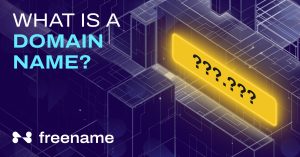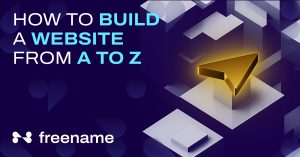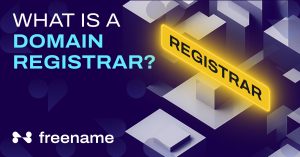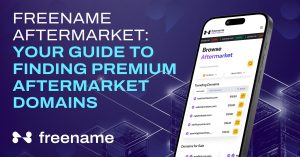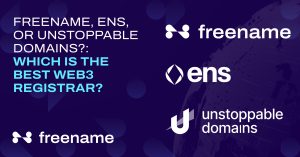The topic of Web3 and sustainability is big. Blockchain technologies, cryptocurrencies, NFTs, and decentralized applications are all part of the Web3 era. This does not mean that there is nothing to worry about, though; it also marks what might be called one of the biggest threats facing our environment ever – Web3’s carbon footprint.
This article will look at some technical aspects and subtle environmental impacts of this new phase in human history while underlining how critical sustainable development within it is before an ecological disaster of gigantic proportions occurs.
Energy Consumption Under the Spotlight: Proof-of-Work Blockchains
One of the most significant considerations about Web3 and sustainability centers on the energy-intensive nature of Proof-of-Work (PoW) consensus mechanisms. Employed by major blockchains like Bitcoin, PoW underpins the security and validation of transactions on the network. Miners – computers dedicated to solving complex cryptographic puzzles – compete against each other, with the winner earning the right to add a block of transactions and receive cryptocurrency rewards. This intentional computational difficulty has staggering consequences.
- The Numbers Don’t Lie: The Cambridge Bitcoin Electricity Consumption Index provides a sobering perspective: Bitcoin’s annual energy consumption rivals that of countries like Argentina. Such energy use translates to a sizable carbon footprint.
- The Source Matters: Much of Bitcoin’s (and similar PoW networks’) energy consumption comes from fossil fuels like coal. This exacerbates climate change by releasing significant amounts of greenhouse gases into the atmosphere.
Shifting the Paradigm: Proof-of-Stake and Other Sustainable Alternatives
The growing recognition of PoW’s energy woes has accelerated the development and adopting of alternative consensus mechanisms, with Proof-of-Stake (PoS) gaining momentum.
- A Different Approach: The PoS model replaces energy-hungry puzzle-solving with a system where validators secure the blockchain by staking a portion of their cryptocurrency holdings. Selection for validating blocks is often based on the amount staked and other factors, drastically reducing energy requirements.
- Ethereum’s Milestone: Ethereum, one of the most prominent Web3 platforms, has successfully undergone “the merge” – a transition from PoW to PoS.
- Beyond PoS: While PoS presents a significant leap forward, the quest for more sustainable consensus mechanisms continues. Other models include:
- Delegated Proof-of-Stake (DPoS) and Proof-of-Authority (PoA): These systems streamline the validation process by reducing the number of nodes involved and minimizing energy use.
- Layer 2 Solutions: Built atop existing blockchains, Layer 2 solutions like rollups and sidechains handle many transactions off the main, energy-heavy blockchain. This offloading improves scalability and reduces the overall energy burden.
Examining the Environmental Cost of NFTs
Non-Fungible Tokens (NFTs), unique digital representations of art, collectibles, music, and more on blockchains, have seen explosive popularity. Unfortunately, their environmental impact warrants examination.
- The Minting and Trading Dilemma: Creating (minting) and trading NFTs, especially on PoW-based blockchains, involves transactions that translate to energy consumption.
- Mitigating the Impact: Initiatives like carbon offsets, where projects counterbalance carbon emissions by supporting renewable energy or conservation efforts, have emerged. Additionally, some NFT platforms are built upon more energy-efficient blockchains.
- A Matter of Choice: Ultimately, the power lies with environmentally conscious NFT creators and collectors. By prioritizing those blockchains and platforms with verifiable commitments to sustainable practices, they can play a crucial role in shaping the future of Web3 innovation.
Smart Contracts: Efficiency Potential and Hidden Complexities
Smart contracts, the self-executing programs embedded within blockchains, have significant potential for enhancing efficiency. However, their complex nature can lead to hidden challenges that affect energy consumption and sustainability. This makes them a perfect example of the interplay between Web3 and sustainability.
Efficiency Potential of Smart Contract
- Automating Processes: Smart contracts can automate tedious, manual tasks in various industries. Imagine streamlining supply chain management by automatically triggering payments upon delivery confirmation. This eliminates the need for human intervention and potential delays, potentially reducing energy expenditure associated with traditional logistics operations.
- Reducing Intermediaries: Smart contracts can facilitate direct peer-to-peer transactions, removing the need for centralized institutions and their associated overhead. This can improve transaction efficiency and reduce the energy consumption required to maintain those entities’ infrastructure.
- Enhanced Tracking and Traceability: The tamper-proof nature of blockchain technology makes smart contracts ideal for tracking the movement of goods and materials throughout a supply chain. This transparency allows for identifying and eliminating inefficiencies that can contribute to environmental impact.
Hidden Complexities of Smart Contract
- Energy Consumption of Complex Logic: While smart contracts can automate processes, complex logic embedded within them can consume significant energy during execution. Each interaction on the blockchain incurs an energy cost. Developers must optimize smart contract code to minimize unnecessary computations and avoid unnecessary loops or redundant checks.
- The ‘Gas Fee’ Dilemma: On some blockchains, users pay fees (often called ‘gas fees’) to incentivize miners or validators to process their transactions. Complex smart contracts can increase gas fees due to the increased computational resources needed. This can discourage adoption and potentially negate the intended efficiency gains.
- Security Vulnerabilities: Bugs or vulnerabilities in smart contracts can have unintended consequences. Exploiting these vulnerabilities often requires significant processing power to resolve, increasing energy consumption. Additionally, fixing vulnerabilities can involve deploying a new smart contract version, leading to additional energy usage.
- The “Eternal Storage” Issue: Data stored on a blockchain is immutable. While this immutability is a security benefit, it also means extra data from smart contracts cannot be easily removed. This can lead to long-term data storage accumulation, potentially increasing energy demands.
Mitigating the Risks and Maximizing Efficiency of Smart Contract
- Focus on Code Design: Smart contract developers should adopt a “green coding” philosophy, aiming for elegant, minimal, and energy-efficient code with clear logic.
- Smart Contract Audits and Testing: Rigorous audits before deployment can identify vulnerabilities and potential inefficiencies that could lead to increased energy consumption.
- Layer 2 Solutions: As discussed earlier, Layer 2 solutions can help reduce the overall energy burden on the main blockchain by offloading some of the smart contract execution off-chain.
- Education and Best Practices: It is crucial to promote knowledge sharing and establish best practices within the developer community regarding sustainable smart contract development.
A Nuanced Assessment: Web3’s Environmental Impact in Context
The environmental discourse surrounding Web3 demands caution against overly simplistic generalizations. A balanced analysis involves several crucial factors:
- Web3 vs. Web2: A Comparative Lens: A fair assessment of Web3’s environmental footprint necessitates comparison with existing centralized systems (Web2). Massive data centers powering cloud services, online banking, and streaming platforms consume vast energy, often derived from non-renewable sources. Web3’s goal of decentralization presents the chance to re-architect systems with increased consideration for sustainability.
- The Potential for Positive Environmental Solutions: The inherent transparency and traceability of Web3 technologies offer opportunities for innovative environmental applications. These include:
- Carbon Tracking and Markets: Blockchains can facilitate precise and reliable tracking of carbon footprints across supply chains, enabling the development of efficient carbon offset and trading markets.
- Peer-to-Peer Energy Trading: Smart contracts and distributed ledger technology potentially revolutionize local power grids. Users can potentially become “prosumers,” producing and consuming renewable energy, fostering decentralized and sustainable energy systems.
- Transparent Environmental Fundraising and Project Tracking: Web3 infrastructure offers means to improve the transparency and accountability of donations towards environmental causes, as well as tracking the real-world impact of conservation and sustainability projects.
The Path Towards Sustainable Web3: A Roadmap for Innovation
Realizing the transformative potential of Web3 while minimizing its environmental impact requires a collaborative and proactive approach. Here’s a straightforward roadmap for stakeholders in the Web3 ecosystem:
- Embrace Energy-Efficient Technologies
Prioritize consensus mechanisms like Proof-of-Stake and their continuous improvements. Developers and projects should choose blockchains that are committed to reducing energy use. - Harness Renewable Energy
The Web3 community should actively promote the use of renewable energy in cryptocurrency mining operations and data centers supporting decentralized networks. - Ensure Transparency
Make environmental impact metrics for blockchains, smart contracts, and NFT platforms readily available. This transparency allows users to make informed choices and drives continuous improvement in sustainability. - Focus on Research and Innovation
Invest in the research and development of energy-efficient protocols, carbon-neutral NFT mechanisms, and alternative consensus methods. - Educate and Empower Users
Inform Web3 users about the environmental implications of their actions on different blockchains and platforms. This knowledge encourages mindful decision-making and supports sustainable Web3 communities. - Implement Regulation and Incentives
Smart policies that balance innovation with environmental protection are essential. Incentives for adopting sustainable blockchain technologies or regulations to phase out energy-intensive systems like Proof-of-Work can make a significant difference.
Embracing Sustainability in Web3 Technologies
The environmental impact of Web3 technologies needs serious attention and action. While early versions of Web3 raise valid concerns about energy consumption, dismissing its potential entirely is shortsighted. Web3’s decentralized and open-source nature allows for rapid innovation and adaptability in addressing these challenges.
By making sustainability a core focus, the Web3 community can create a future where this technology promotes economic growth, social change, and environmental progress. Web3’s development offers a chance to fix issues from past technologies.


